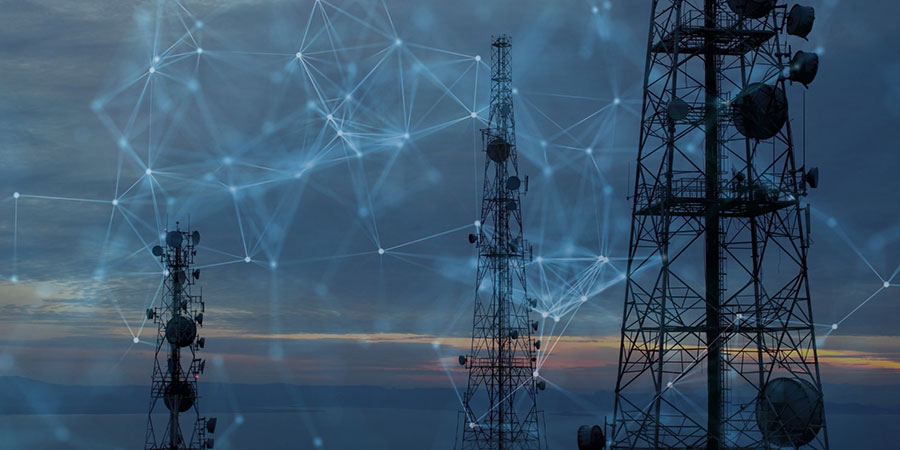The telecommunications industry has been the pillar of societies worldwide – tasked with the mammoth role of supporting the abrupt shift to work-from-home, remote learning, and other virtual activities in a pandemic-stricken environment mired by lockdowns.
This has led to an increased reliance on online services and a widespread surge in mobile data consumption and broadband, and hence greater connectivity. In 2021, it is estimated that 30 billion IoT devices will be connected globally. With 5G powering IoT to facilitate the demand for IoT applications and solutions across industries, the onus is on telecommunications companies to step up on their 5G and IoT capabilities to navigate a vastly different business landscape compared to before the pandemic.
Globally, countries have been pushing for faster digital transformation to help industries recover from the pandemic. This year, for example, Australia will schedule allocations of both high-band and low-band 5G spectrums to provide 5G network key to raising productivity in areas like smart farming, automated vehicles, and robotics. Similarly in India, 5G technology is picking up momentum, albeit at a slower pace. And in China, 6G deployment is already in the pipeline as the country launched an experimental 6G test satellite in November 2020.
As remote activities continue to dominate our lives, the telecommunications sector is challenged to establish user-centric networks that focus not only on delivering more robust, reliable, and omni-channel communications, but also understanding customer trends to yield positive customer perception and retention.
Part of a reliable and robust network is ensuring seamless connectivity and security. In an increasingly digital world dominated by higher bandwidths and increased speeds, telecommunications companies need to step up against cyber attacks that have become more rampant and sophisticated.
Last week, New Zealand’s central bank was hit by a cyberattack. In August 2020, New Zealand’s stock exchange suffered a series of DDoS attacks, which forced the exchange to halt trading. According to New Zealand’s agency Computer Emergency Response Team (CERT), cyberattacks increased by 33% year-on-year in the country. In the face of heightened data breaches globally, the sector is pressured to better circumvent these breaches. At the same time, more needs to be done to provide a secured network to safeguard consumers’ data and comply with regulatory guidelines.
With 5G roll-out core to many telecommunications companies, networks are also challenged to raise capex efficiency and leverage on technology to create new products and services to find new avenues for growth. This means focusing on the benefits of 5G for consumers, and in particular, enterprises. At the same time, telecommunications companies are pressured to reduce energy consumption and carbon footprint as increased 5G deployment and greater bandwidth result in an inevitable hike in energy consumption.
Opportunities are abound
The need for robust broadband connections motivates consumers and enterprises to upgrade to 5G and leverage on RAN for higher connectivity, greater data speed, and reduced latency for shorter load times. With technology being instrumental to consumers and corporations, telecommunications companies can seek growth in delivering more connected and intelligent devices, and maximise the values of innovations.
According to GSMA, 5G will generate an economic worth of US$700 billion in the enterprise sector in the next five years. Telecommunications companies are exploring options to form strategic vertical or horizontal partnerships to provide industry-specific end-to-end applications and use-cases to address gaps in enterprise markets.
Moving forward, the sector can support new business patterns and markets through integrating 5G, edge computing, and AI to yield optimisation. By 2023, for instance, 5G is forecast to account for 25% of all mobile data traffic, of which one-fifth of use-cases will depend on edge computing to speed up the processing of real-time data. Telecommunication companies who leverage this technology beyond their role of providing connectivity are in good stead to move up the value chain and gain a first-mover advantage.
Within the sector, focus on real-time analytics driven by artificial intelligence (AI) and machine learning (ML) to achieve better customer service, network optimisation, and even fraud detection is critical to yield greater efficiency and even increased revenue.
Finally, the emergence of more smart cities highly-dependent on network and infrastructure provides opportunities for telecommunications companies to shape societies. In Southeast Asia, for instance, the drive towards digital transformation has led to the launch of the ASEAN Smart Cities Network (ASCN) to promote the development of smart cities in the region. Elsewhere in Europe, Barcelona’s pilot smart city – developed by the government, telecommunications companies, and IT firms – serves as a precedent for other cities to position themselves as future-forward cities.








